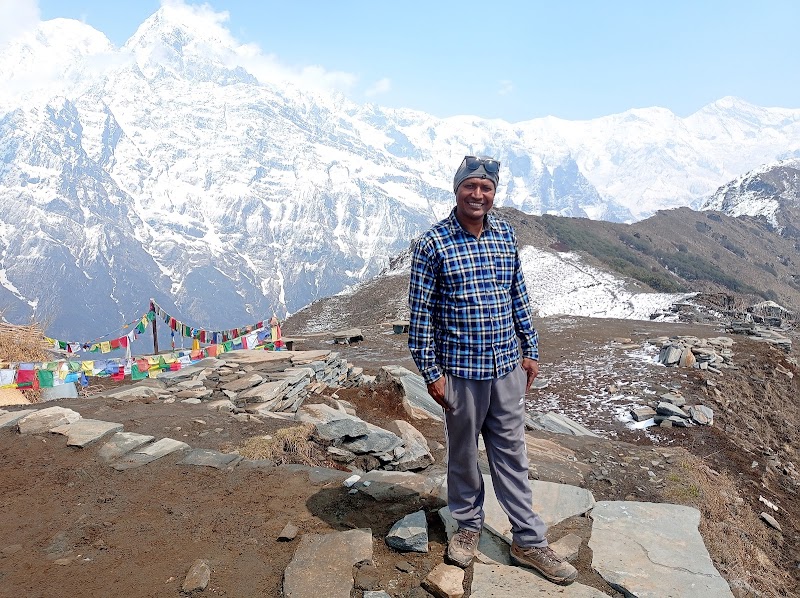Bhaktapur: Exploring Nepal’s Living Heritage Beyond Kathmandu
Step into Bhaktapur, a vibrant ancient city where Nepal’s cultural heritage is alive in every corner. Explore centuries-old temples, taste traditional foods, and navigate winding stone streets that invite curiosity and respect. Discover practical tips to make your visit seamless and rewarding.
Wear sturdy shoes
The streets and alleys of Bhaktapur are paved with uneven, ancient bricks; durable footwear will keep your feet comfortable and safe.
Carry local currency
Most local vendors and smaller shops only accept cash; having Nepali rupees on hand ensures you don’t miss out on authentic purchases.
Stay hydrated
Walking under the sun, especially in spring or autumn, can be dehydrating. Bring a refillable water bottle to keep pace with your exploration.
Respect cultural customs
Temples and shrines have specific rules; removing shoes where required and asking permission for photos shows respect and avoids misunderstandings.
Bhaktapur: Exploring Nepal’s Living Heritage Beyond Kathmandu
Bhaktapur, just a short drive from Kathmandu, offers a distinct journey into Nepal’s cultural and historical soul. Walking through its labyrinth of brick alleys, you’ll encounter centuries-old temples, intricately carved wooden windows, and quiet courtyards that pulse with the rhythm of daily life. This ancient city wears its heritage boldly, where markets hum with local artisans and the scent of spices invites you deeper. Unlike the urban sprawl, Bhaktapur’s air feels thicker with stories, as stone pagodas stand guard over squares once bustling with medieval festivity.
The compact layout of Bhaktapur makes it easy to explore on foot, ideal for a half-day to full-day trip. Start your route at Durbar Square, a cluster of palaces and temples that reveal the city’s Newar roots. Climbing to the top of the Nyatapola Temple crowns your visit with panoramic views of the city rooftops and the looming Himalayas beyond. Be mindful of the uneven cobblestones underfoot, a reminder of the city’s age and authenticity.
Food plays a central role here: try the local specialty, "king curd" – a thick, creamy yogurt that fends off the afternoon thirst and fuels further wandering. Vendors calling out their wares and children darting between ancient walls create an atmosphere alive but never rushed.
Practical tips: carry cash as most small shops don’t take cards, and wear comfortable, sturdy shoes for walking on rough surfaces. The best time to visit is during spring or autumn when the weather is clear and the festivals vibrant. Avoid monsoon months if you want to skip slippery streets and fewer crowds.
Bhaktapur is not just a photo opportunity but a chance to engage with a community fiercely protective of its traditions and environment. Respect local customs, avoid plastic waste, and consider hiring local guides to deepen your understanding of this place fiercely itself. Whether a culture lover or a casual sightseer, Bhaktapur delivers the kind of adventure grounded in history, texture, and a spirit that challenges you to see beyond the obvious.
Nearby Trips
All Adventures
Boat Charters
Water Activities
Adventures near Kathmandu
Discover the unique and memorable adventures that make Kathmandu special.
Frequently Asked Questions
How long does a typical visit to Bhaktapur take?
A thorough visit can take between 4 to 8 hours depending on how many temples, museums, and local markets you explore.
Is Bhaktapur safe for solo travelers?
Yes, Bhaktapur is generally safe during daylight hours with friendly locals. It’s still advisable to take normal precautions like avoiding poorly lit areas at night.
Are there guided tours available?
Yes, local guides are available and highly recommended to enrich your visit with historical and cultural context.
What’s the best way to get to Bhaktapur from Kathmandu?
Bhaktapur is about 13 km from Kathmandu and accessible by taxi, local bus, or private vehicle. The trip takes roughly 30 to 45 minutes depending on traffic.
Can I use credit cards in Bhaktapur?
Most small merchants and markets operate on a cash-only basis, so carrying Nepali rupees is essential for shopping and eating locally.
What festivals are celebrated in Bhaktapur?
Bhaktapur hosts several traditional festivals such as Bisket Jatra, Ghode Jatra, and various Hindu and Buddhist events that vividly showcase Newar culture.
Recommended Gear
Comfortable walking shoes
Needed to handle uneven cobblestone streets and extended periods on foot.
Reusable water bottle
Keeps you hydrated through the day and helps reduce plastic waste in the city.
Light rain jacket
Useful during monsoon showers and unexpected rain bursts.
Camera or smartphone with good zoom
Captures architectural details and street scenes, especially during festivals and early morning light.
Local Insights
Hidden Gems
- "Pottery Square - watch artisans shaping clay as they have for centuries"
- "The quiet courtyard behind Nyatapola Temple - a peaceful retreat from the main square"
Wildlife
- "Look for common urban birds like Himalayan bulbul and spotted doves in temple gardens"
- "Occasional monkeys can be seen near the outskirts but keep distance"
History
"Bhaktapur was once a powerful medieval kingdom and maintains its Newar architecture and urban design, with many buildings dating back to the 16th and 17th centuries."

